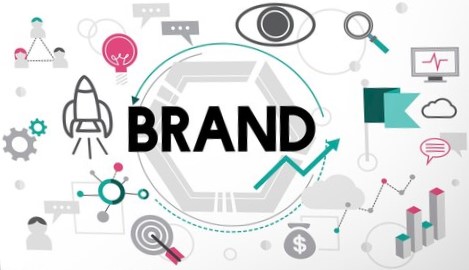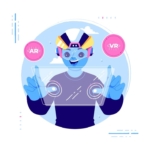In today’s fast-paced, digitally connected world, branding has transformed significantly. What once centered on logos and slogans has evolved into a complex interplay of identity, engagement, and technology. As consumers interact with brands across multiple channels and devices, understanding the evolution of branding in the digital age is crucial for businesses looking to stay relevant and impactful.

- The Traditional Era of Branding
Before the digital revolution, branding was primarily about visual identity and consistency. Brands were built through:
- Logos and Symbols: A recognizable logo was the cornerstone of brand identity.
- Taglines: Memorable slogans helped communicate the brand’s core message.
- Print and Broadcast Media: Advertising was limited to newspapers, magazines, radio, and television.
- Word of Mouth: Customer experiences and recommendations played a significant role in brand perception.
While effective, this approach was relatively static, with limited interaction between brands and consumers.
- The Impact of the Digital Revolution
The advent of the internet and digital technologies reshaped the branding landscape:
- Web Presence: Websites became essential, offering businesses a new platform to showcase their identity and engage with customers.
- Social Media: Platforms like Facebook, Instagram, and Twitter transformed brands into interactive entities. Real-time communication and user-generated content became critical.
- Search Engine Optimization (SEO): Ensuring visibility in search results added a new layer to brand strategy, focusing on keywords and content relevance.
- Modern Branding Elements
Today, branding goes beyond logos and taglines. It encompasses a holistic approach that includes:
- Brand Experience: From the first click on a website to post-purchase support, every touchpoint contributes to the overall brand experience.
- Personalization: Brands use data to deliver personalized experiences, making consumers feel valued and understood.
- Storytelling: Compelling narratives help brands connect emotionally with their audience, fostering loyalty and trust.
- Visual and Verbal Identity: Consistent visuals and tone of voice across all digital platforms ensure a cohesive brand presence.
- Key Trends in Digital Branding

- Content Marketing: High-quality, valuable content positions brands as thought leaders and drives engagement.
- Influencer Partnerships: Collaborating with influencers expands reach and builds credibility.
- Interactive Content: Quizzes, polls, and videos increase user engagement and enhance brand recall.
- User-Generated Content: Encouraging customers to share their experiences amplifies authenticity and trust.
- Challenges of Digital Branding
With the benefits of digital branding come several challenges:
- Maintaining Consistency: Ensuring a uniform brand message across multiple channels is complex but crucial.
- Adapting to Change: The digital landscape is ever-evolving, requiring brands to stay agile and innovative.
- Data Privacy Concerns: Balancing personalization with privacy is a delicate act, especially with increasing regulations like GDPR.
- The Future of Branding
Looking ahead, several trends are likely to shape the future of branding:
- Artificial Intelligence (AI): AI-driven insights will enable hyper-personalized marketing strategies and customer experiences.
- Augmented and Virtual Reality (AR/VR): Immersive technologies will offer new ways for brands to engage with their audience.
- Sustainability and Ethics: Brands that prioritize social responsibility and ethical practices will resonate more with conscious consumers.
Conclusion
The digital age has revolutionized branding, transforming it from a static identity to a dynamic, interactive experience. By embracing digital tools and trends, brands can build deeper connections with their audience, stay relevant, and drive long-term success. Understanding and adapting to this evolving landscape is not just an option—it’s a necessity for any brand aiming to thrive in the digital era.



